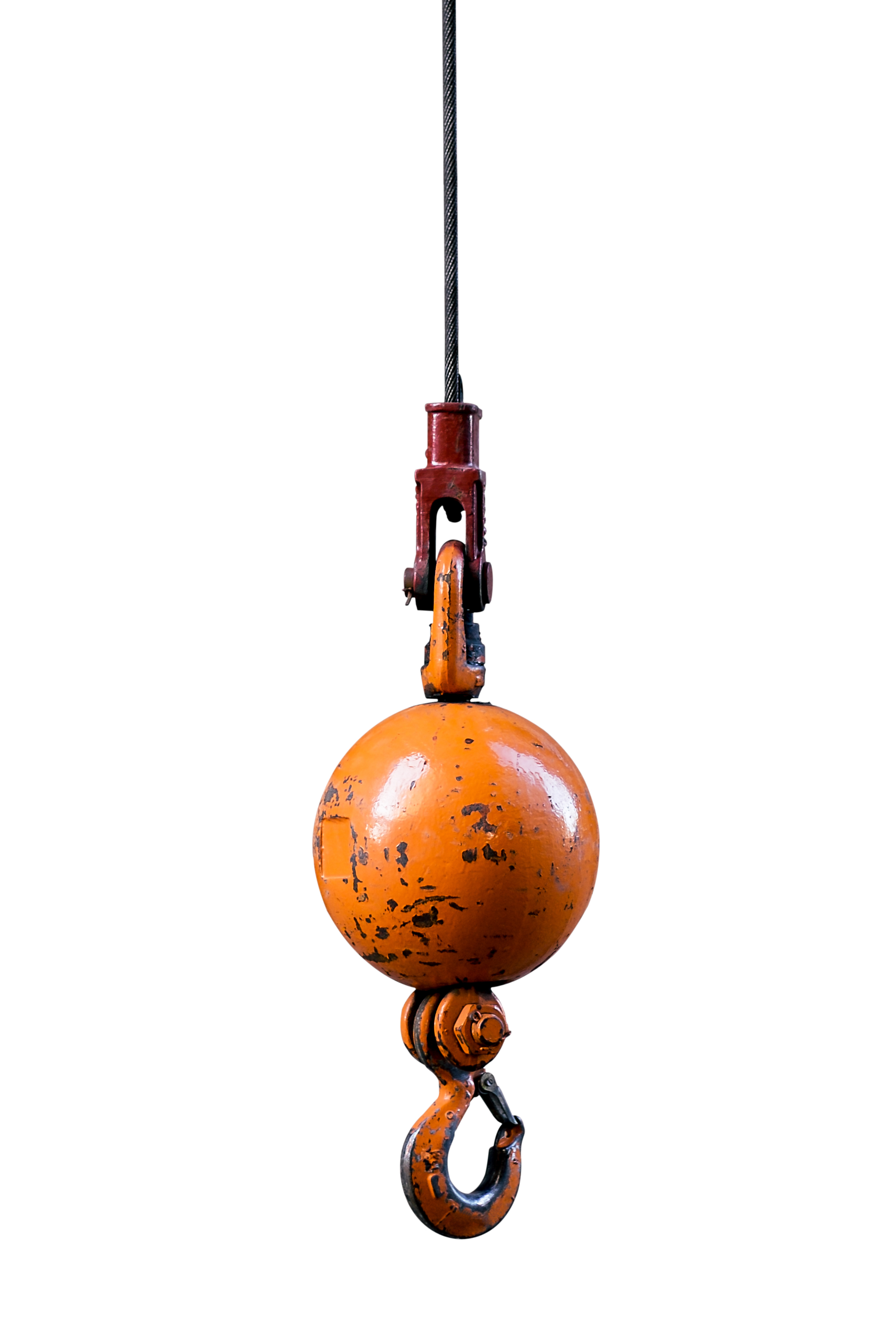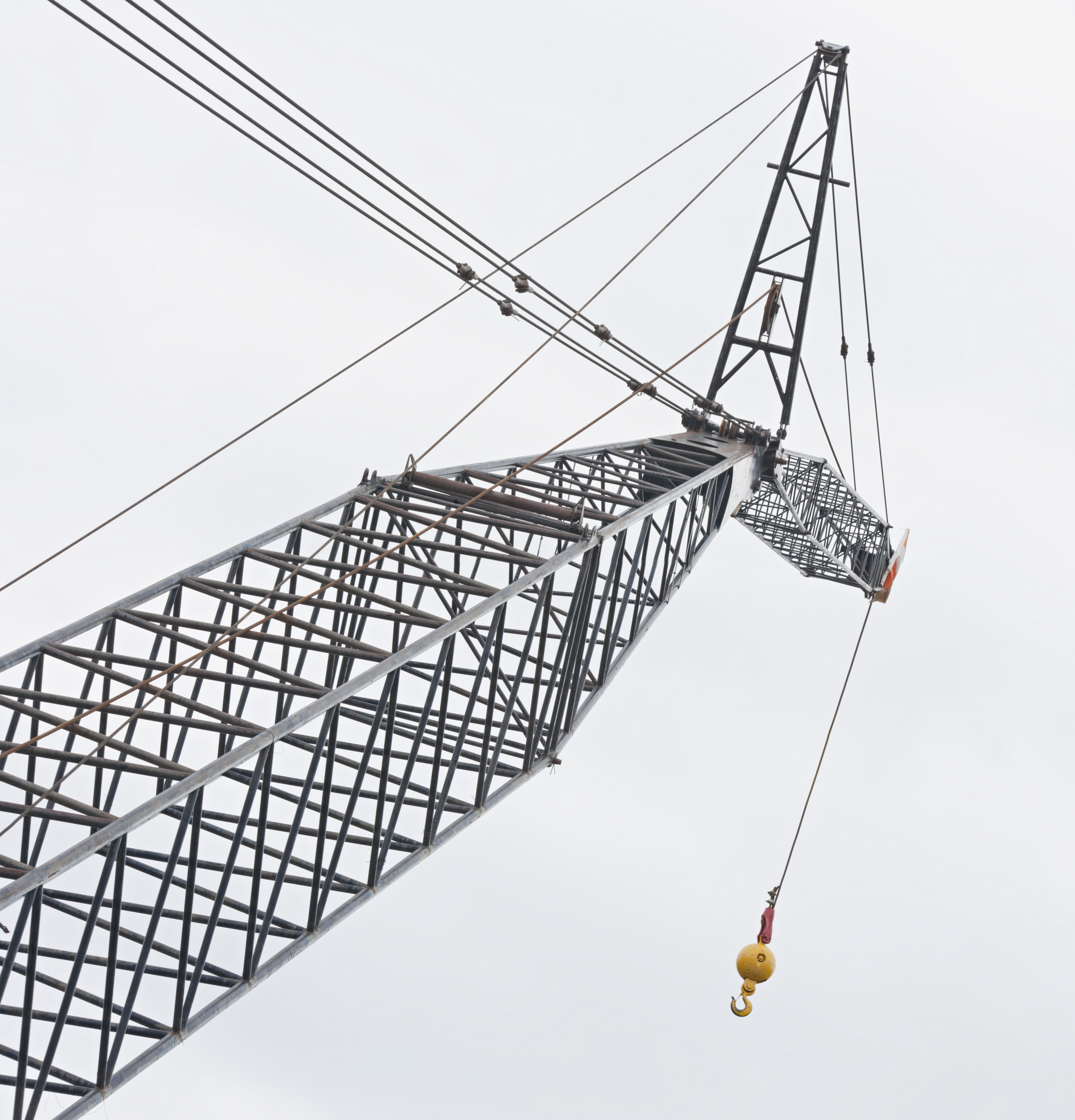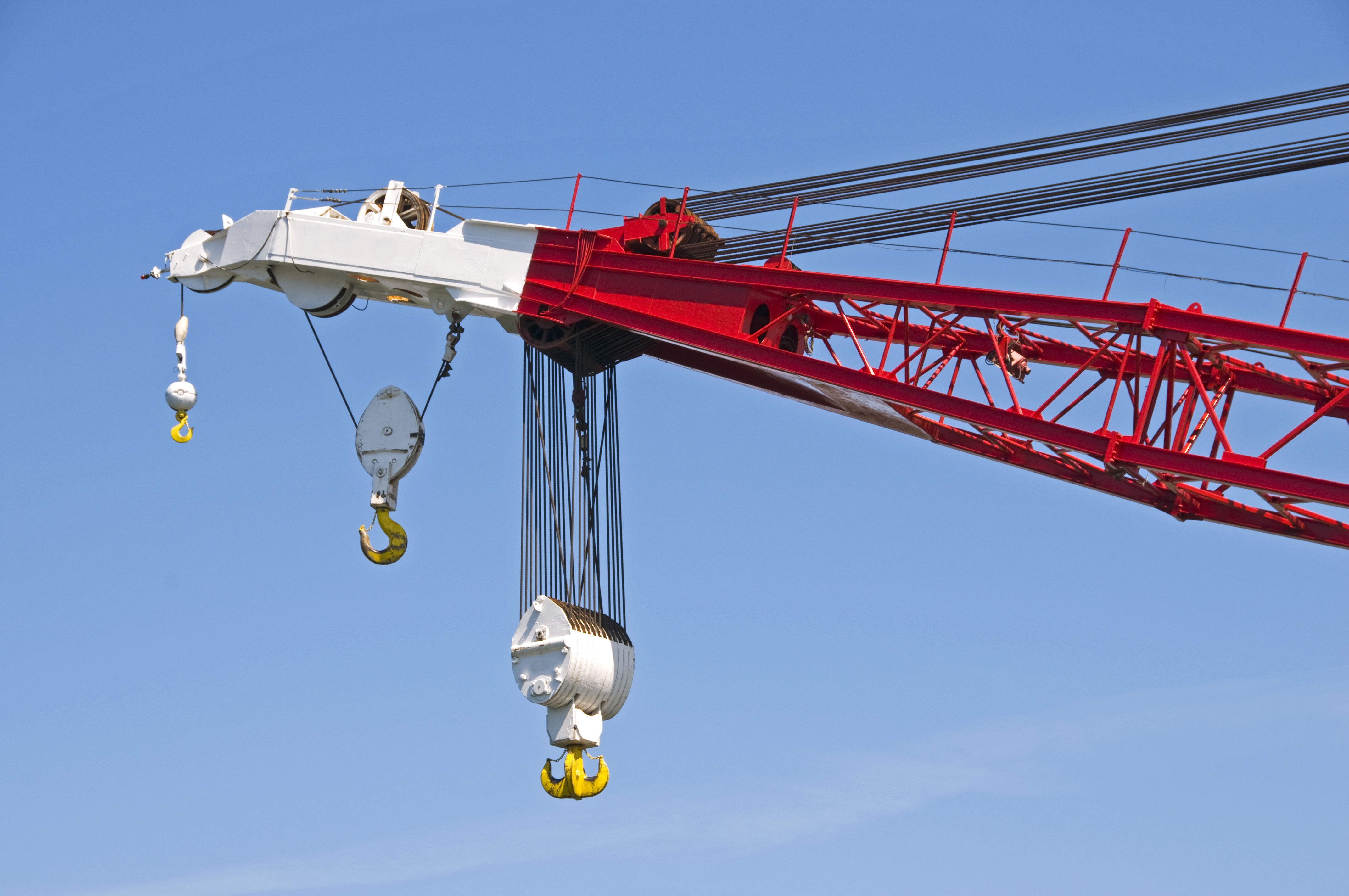Headache Ball
You may have heard the phrase “headache ball” when someone mentions a crane. Beyond the obvious explanation (imagine walking into it), what is a headache ball? A headache ball is a weighted sphere attached to a lifting hook; the assembly is fastened to a wire rope for crane lifting operations (Figure 1).

Headache balls, also known as overhaul hook balls, are used to keep tension on load lines — usually, single-part or “whip” lines. The tension serves two primary purposes: 1) the tension allows the wire rope (load line) to properly wrap around its drum; 2) the tension allows the hook to lower when the drum unspools the wire rope.
In contrast to natural fiber rope, wire rope has substantial weight. Imagine tens, if not hundreds, of feet of wire rope running the length of a crane boom (Figure 2). When the hook is raised near the tip of the boom, all the weight of the wire rope is pulling down along the length of the boom (Figure 3). Without a counteracting weight to overcome (or overhaul) the weight of the wire rope along the boom, the wire rope will eventually pull an unloaded hook up to the boom tip in an uncontrolled manner.


To combat the phenomenon, crane hooks for single-part load lines are assembled with these weighted balls. The official term for the assembly is an overhaul hook ball, but enough ironworkers and other tradesmen have had unpleasant encounters that the assembly has earned another name — a headache ball.

